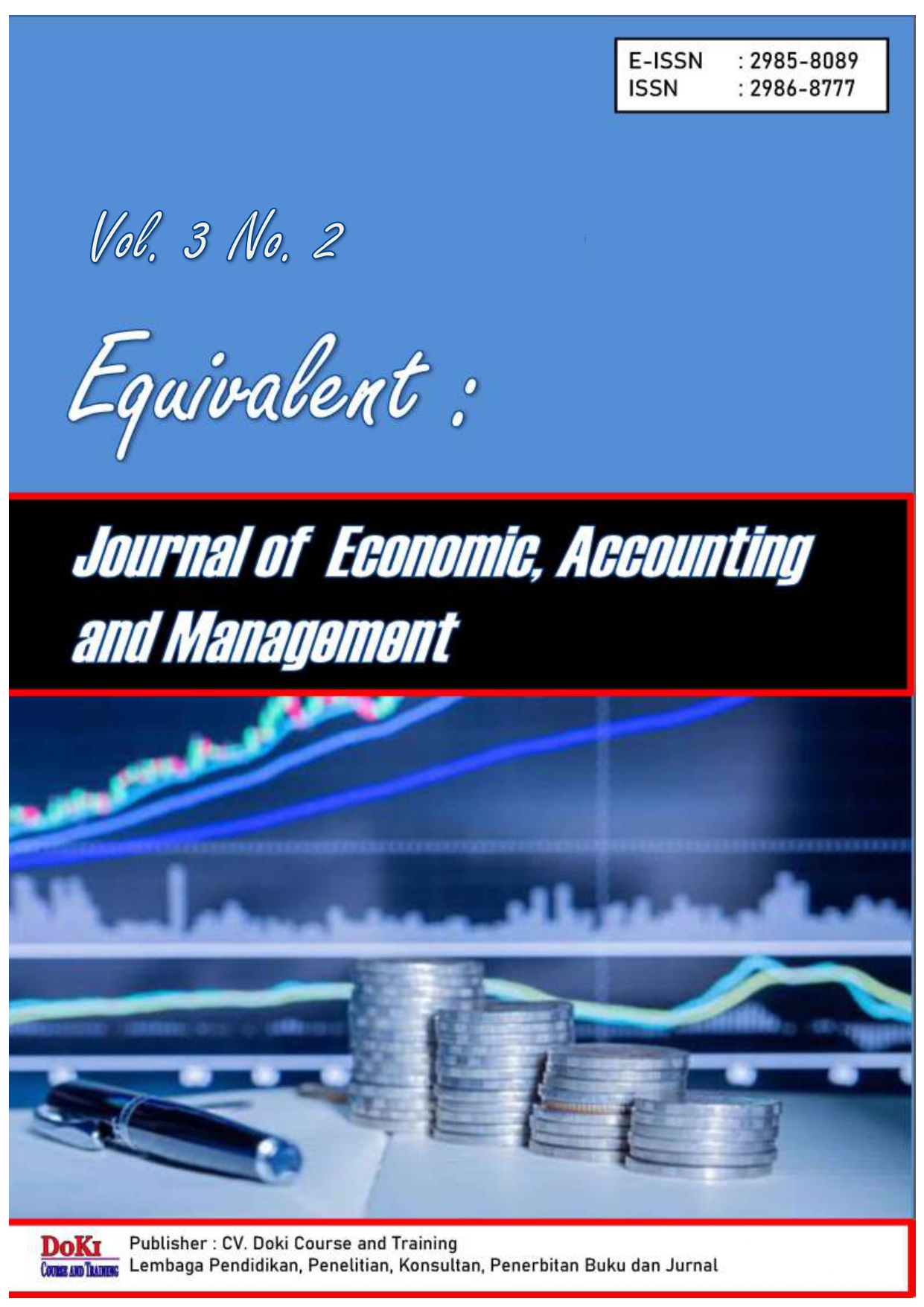Evaluation of Budget Realization in The Financial Statements of Bambalamotu Sub-District Based on PSAP No. 02
DOI:
https://doi.org/10.61994/equivalent.v3i2.944Keywords:
Budget Realization Report, District Governance, PSAP No. 02Abstract
This study aims to examine the budget realization in the financial reports of Bambalamotu Sub-district against the implementation of Government Accounting Standards Statement (PSAP) No. 02. From the analysis, it is seen that even though not all of the items that are needed in PSAP No. 02 are presented-such as revenues, transfers, and net financing-the report preparation has been adapted to the actual fiscal situation of the area and still accommodates the principles of transparency and accountability. These modifications illustrate the necessity for contextualized and flexible application of accounting standards, specifically in areas of weak fiscal capacity. This research also constructs further the importance of the computerized system support for financial reporting but clarified that inadequate human resources continue to be the primary constraint in maximizing the system. The findings' implications assure that reporting that is customized according to local requirements and capacity can continue to be effective in the fulfillment of public accountability goals. The research is limited in the sense of having narrow geographical coverage and sparse primary data.
References
Brusca, I., Manes Rossi, F., & Aversano, N. (2018). Accountability and transparency to fight against corruption: an international comparative analysis. Journal of Comparative Policy Analysis: Research and Practice, 20(5), 486–504. https://doi.org/https://doi.org/10.1080/13876988.2017.1393951
Carlitz, R. (2013). Improving transparency and accountability in the budget process: An assessment of recent initiatives. Development Policy Review, 31, s49–s67. https://doi.org/https://doi.org/10.1111/dpr.12019
Christensen, M., & Skærbæk, P. (2007). Framing and overflowing of public sector accountability innovations: A comparative study of reporting practices. Accounting, Auditing & Accountability Journal, 20(1), 101–132. https://doi.org/https://doi.org/10.1108/09513570710731227
Djamhuri, A. (2009). a Case Study of Governmental Accounting. Universiti Sains Malaysia, 322.
Farzad Eivani,. (2012). Public accountability and government financial reporting. African Journal of Business Management, 6(29), 8475–8482. https://doi.org/10.5897/ajbm12.072
Gustini, S., Sapulette, S. G., Literacy, F., Technology, F., & Attitudes, F. (2024). Planning Budget For MSMEs Financial Performance Abstrak Introuction Literature Rievew Conclusions can be drawn based on the findings of research and discussion about the impact of. 3(1), 231–233.
Harrison, T. M., & Sayogo, D. S. (2014). Transparency, participation, and accountability practices in open government: A comparative study. Government Information Quarterly, 31(4), 513–525. https://doi.org/https://doi.org/10.1016/j.giq.2014.08.002
Husin, D. (2016). Flexibility Of Budget Accountability Using Flow Modification in the Design of Village Financial Accounting. Asia Pasific Fraud Journal, 1(1), 19–35. https://doi.org/10.21532/apfj.001.16.01.01.02
Marota, R., & Johari, R. J. (2024). Enhancing Governance through IPSAS : Impacts on Transparency and Accountability in Public Sector Financial Reporting. 9(2), 720–743. https://doi.org/10.23887/jia.v9i2.86364
Putri, P. P. S., Damayanti, R., & Hapsari, A. N. S. (2022). Village Fund Allocation Practice: The Investigation of Accountability and Transparency. Jurnal Ilmiah Akuntansi, 6(2), 455. https://doi.org/10.23887/jia.v6i2.40390
Septalinda, F., . S., Supriyono, B., & Suryawati, D. (2023). Participatory Budgeting in Practice: A Case Study of the Banyuwangi District Legislative. KnE Social Sciences, 2023, 376–392. https://doi.org/10.18502/kss.v8i17.14132
Sudirman, S. E., & Ernawaty, U. (n.d.). The effect of budget participation on budgetary slack.
Syafitri, R., Sudirman, S., & Sugianto, S. (2020). New Public Management Model as Rule Application of Performance-Based budget (ABK) (Empirical Study at SKPD of Sigi Regency). 117(Gcbme 2018), 83–87. https://doi.org/10.2991/aebmr.k.200131.018
Tempomona, I. A. O., Yusuf, R. M., & Paranoan, S. (2023). Urgensi Artificial Intelligence Dalam Transformasi Akuntan(Si). Jurnal Akuntansi Multiparadigma, 14(3), 536–551. https://doi.org/10.21776/ub.jamal.2023.14.3.37
Usman, E., Haris, N., Sugianto, S., Sudirman, S., & Rustiarini, N. W. (2024). Participatory budgetary model and performance of local government officials: an Indonesian case. International Journal of Public Sector Performance Management, 13(1), 25–41.
Yuliati, R., Yuliansyah, Y., & Adelina, Y. E. (2019). The implementation of accrual basis accounting by Indonesia’s local governments. International Review of Public Administration, 24(2), 67–80. https://doi.org/https://doi.org/10.1080/12294659.2019.1603954
Downloads
Published
Issue
Section
License
Copyright (c) 2025 Iin Shakira, Ernawaty Usman, Sugianto, Jamaluddin

This work is licensed under a Creative Commons Attribution-NonCommercial 4.0 International License.















